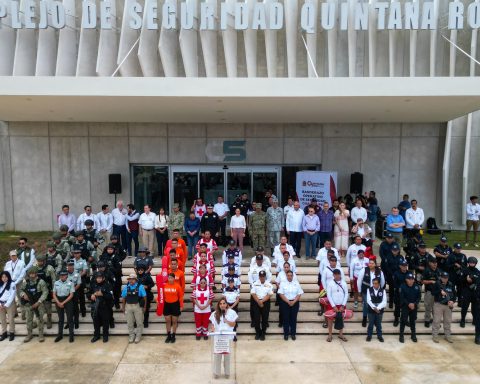Por Silvia Wanderlust.
Os presento el Sargazo. El sargazo es una macroalga que vive y se reproduce en la superficie: flota.
Desde hace varios años, y ahora más que nunca, prolifera de manera espantosa en las aguas del caribe mexicano. Así es, el caribe mexicano ya no es turquesa: ahora es marrón.
Desde Cancún a Belize no se salva ni un metro de costa de la famosa Riviera Maya.
Se reproduce en el conocido Mar de Sargazo, cerca del Triángulo de las Bermudas, al sur del Oceáno Atlántico. Allá hay algo parecido a un remolino que hasta ahora lo mantenía ahí suspendido, pero cuando la masa crece notablemente, las mismas corrientes que forman ese remolino lo expulsan y estas algas son traídas a las costas caribeñas. Esta alga se acumula estrepitosamente en la costa, donde se pudre, genera un olor fétido y contamina el suelo.
Aunque sirve para ciertos crustáceos y peces como refugio y alimento, acaba con el oxígeno del agua y la gruesa capa impide la fotosíntesis de otras algas.
Dificulta la llegada de las tortugas a la costa para anidar. Está generando un desastre medioambiental. También turístico, aunque eso me importa menos.
¿Por qué vivimos bañados en sargazo este año? Porque la Tierra es inteligente y el karma existe: el turismo está cayendo en picado precisamente por haber crecido vertiginosamente. El sargazo se reproduce gracias al exceso de nutrientes en el agua, nutrientes que el ser humano echa al mar en forma de residuos fecales de las industrias y fertilizantes de la agricultura.
El monstruo del turismo alimenta a su propio enemigo. Y así los hoteles se encuentran levantando sargazo día y noche para no perder todavía más clientes.
Quizá porque os lo merecéis. Porque la Tierra ya no sabe cómo deciros que lo estáis haciendo MAL. Que lleváis haciéndolo mal durante años, y que las pérdidas millonarias no son nada comparadas con las pérdidas medioambientales que habéis generado.
¿Hora de recapacitar,
o vamos a seguir nadando en nuestra propia mierda?
#SargazoFieldsForever #sargazo #caribemexicano #cleaningtheocean #4ocean #beachcleanup #mexico #caribe #quintanaroo #mardesargazo #turismo #playadelcarmen #yucatan #marcaribe
// Gracias por sumergirte conmigo y disparar, Ainoa
————————————————–
Let me introduce you the Sargassum. Sargassum is a seaweed that lives and reproduces on the surface: it floats.
For several years, and now more than ever, it proliferates in a terrible way in the waters of the Mexican Caribbean. That’s right, the Mexican Caribbean is no longer turquoise: now it’s brown.
From Cancun to Belize, not even a meter of coastline of the famous Riviera Maya can be saved.
It reproduces in the well-known Sargassum Sea, near the Bermuda Triangle, in the South of the Atlantic Ocean. There is something similar to a whirlpool that until now held the Sargassum suspended on the surface, but when the mass grows noticeably, the same currents that form that whirlpool expel it and these algae is brought to the Caribbean coasts. This algae accumulates loudly on the coast, where it rots, generates a foul odor and contaminates the ground.
Although it serves for certain crustaceans and fish as shelter and food, it ends with the oxygen of the water and the thick layer prevents the photosynthesis of other algae.
It hinders the arrival of the turtles to the coast to nest. It is generating an environmental disaster. Also tourist, although that matters less to me.
Why do we live bathed in sargassum this year? Because Earth is intelligent and karma exists: tourism is plummeting precisely because it has grown vertiginously. The sargassum reproduces due to the excess of nutrients in the water, nutrients that the humans throw to the sea in the form of faecal residues from the industries and fertilizers from agriculture.
The monster of tourism feeds its own enemy. And the hotels are lifting sargasso day and night so they don’t lose even more tourists.
Maybe because you deserve it. Because Earth no longer knows how to tell you that you are doing WRONG. That you have been doing wrong for years, and the millionaire losses have nothing to do with the environmental losses that you have generated.






